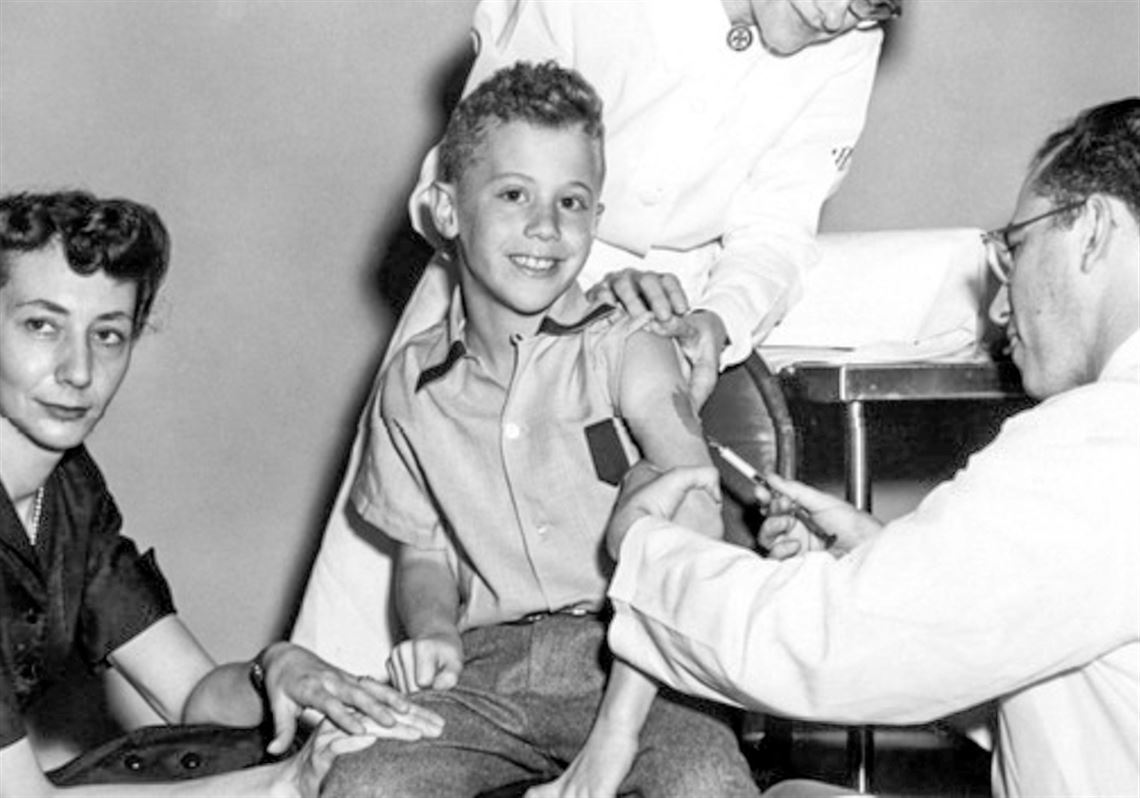
The New Era Of Advanced Genetic Medicines
Three Nobel Prizes That Will Change The Face Of Medicine . . .
| Below is the most recent issue of Biotech Frontiers, from analyst Erez Kalir. In addition to hosting Porter & Co. Biotech Frontiers on our website, we also make it available as a downloadable PDF. Subscribers can access this issue as a PDF on the “Issues & Updates” page here. If you have any questions, please give Lance, our Director of Customer Care, and his team a call at 888-610-8895 or internationally at 443-815-4447. Again, thanks for being part of Porter & Co. |
Early 1950s America was a time of boundless optimism, but summers still carried fear.
Danger lurked in swimming pools, on playgrounds, and at family gatherings. Parents especially dreaded the warm-weather months: not for the heat, but because they brought polio – a disease that struck without warning, paralyzing or killing thousands of children each year. Hospitals across the country overflowed with rows of iron lungs, the mechanical respirators that kept polio’s youngest victims alive. No one knew how to stop it.
Then a quiet, methodical virologist – Dr. Jonas Salk – had a revolutionary insight that upended the established way of thinking about vaccines. His approach eliminated polio and forged a path to prevent scores of other catastrophic pediatric infectious illnesses.
Dr. Salk’s paradigm shift centered on what it would take to render a vaccine effective. Vaccines had already been around for centuries: The first, dating to 1796, is credited to English physician Edward Jenner, who discovered that exposure to live cowpox could protect people from the deadly smallpox virus. For more than 150 years, Jenner’s basic approach remained the dominant model: use a live virus or bacterium, weakened or related to the target, to trigger immunity without causing full-blown disease. This approach, known as live attenuated vaccination, worked for smallpox, measles, and yellow fever.
But it didn’t work against polio. No one knew how to weaken the polio virus, and there were no closely related viruses in the animal kingdom that could be used as cowpox had been with human smallpox.
These barriers were the ones Dr. Salk’s insight leapt over. What if, he asked, instead of weakening the polio virus or seeking a relative to it that did not exist, physicians instead killed the polio virus altogether using formaldehyde in the laboratory so that it could not replicate or cause infection… then injected patients with dead virus particles to train the immune system? The idea seemed radical, even outlandish, at the time. But it worked.
In 1954, the largest public-health trial in American history tested Dr. Salk’s vaccine in over 1.8 million children. The results were stunning. The vaccine was safe, effective, and lifesaving – cutting polio cases by more than 90% in the U.S. within a few years. When the vaccine’s broad availability was announced in 1955, church bells rang out across America, and crowds celebrated in the streets.
But Salk’s vaccine did more than eliminate polio – a stupendous achievement in its own right. His insight shifted the paradigm of how to make effective vaccines altogether – from live attenuated vaccines to what (after Salk) became known as inactivated vaccines. Such vaccines were safer, more effective, and more scalable. Salk’s approach opened the door to large public health campaigns to vaccinate the public against influenza, hepatitis A… and decades later, COVID-19.

This month in Biotech Frontiers, we’re bringing readers something special. Instead of focusing on a single new stock recommendation, we’ll be covering what I believe is the single most important thematic trend in medicine over the coming 20 years – what I call the Era Of Advanced Genetic Medicines. This era is poised to change medicine as dramatically as Dr. Jonas Salk’s vaccine did… and for the investors who grasp its significance, it will generate trillions of dollars in value.
To fully appreciate the coming paradigm shift, we’ll begin by studying two revolutionary historical shifts in medicine that have preceded and laid the groundwork for it – discoveries that led to two of the most important Nobel Prizes ever awarded: one for monoclonal antibodies, the other for recombinant DNA. Understanding this history will better enable us to apply “pattern recognition” and to discern what’s unfolding in the genetic medicines domain today.
We’ll then focus on three relatively recent Nobel Prizes that are propelling the advanced genetic medicines revolution forward: for CRISPR-Cas9, RNA interference and siRNA, and mRNA modification.
We’ll conclude by sharing the inaugural Biotech Frontiers Advanced Genetic Medicines Watchlist – consisting of the 10 most promising companies in the domain.
As we always do, we’ll end this issue with a Portfolio Review and a discussion of our “buy” and “hold” recommendations.
Let’s begin…
This content is only available for paid members.
If you are interested in joining Porter & Co. either click the button below now or call our Customer Care team at 888-610-8895.